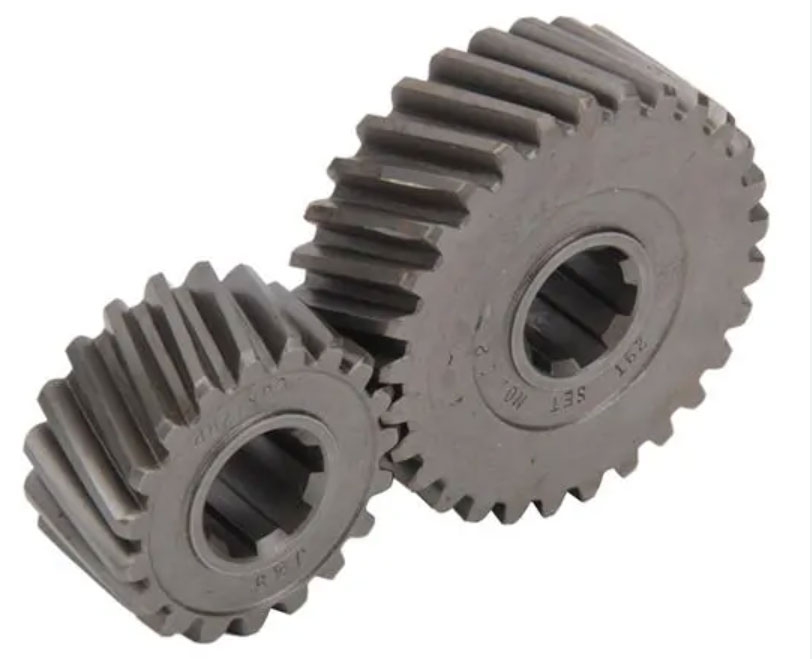Helical gears are widely used in wind turbines for power generation due to their effectiveness in transmitting high torque and their efficiency. Here’s a discussion of how helical gears contribute to power generation and gearbox efficiency in wind turbines:

Power Generation:
- Torque Transmission: Wind turbines require the conversion of low-speed, high-torque rotational motion of the rotor into high-speed rotation of the generator. Helical gears are well-suited for this task as they have a high torque-carrying capacity. The helical gear design allows for efficient transmission of the large torque generated by the rotor to the generator, enabling effective power generation.
- Load Distribution: The angled teeth of helical gears facilitate load distribution across multiple gear teeth. In wind turbines, where torque loads can be substantial, this load distribution helps to evenly distribute the forces, reducing wear and increasing the lifespan of the gears. It also helps in minimizing gear vibrations and noise, enhancing overall performance.
Gearbox Efficiency:
- Smooth Engagement: Helical gears offer smoother engagement compared to other gear types. The inclined teeth of helical gears gradually mesh with each other, resulting in reduced impact and shock loads on the gearbox components. This smooth engagement helps in improving gearbox efficiency by minimizing energy losses due to friction and reducing wear and tear.
- High Gear Ratios: Wind turbines often require high gear ratios to match the low rotational speeds of the rotor with the higher speeds needed by the generator. Helical gears are capable of providing high gear ratios with good efficiency. The gradual engagement of helical gears allows for a larger number of gear teeth to be in contact at any given time, enabling efficient power transfer over a wide range of gear ratios.
- Efficiency Improvements: Manufacturers employ various techniques to further enhance the efficiency of helical gearboxes in wind turbines. These include optimizing gear tooth profiles, using advanced lubrication systems, and applying surface treatments to reduce friction and minimize energy losses. Additionally, the selection of high-quality materials and precise manufacturing processes contribute to overall gearbox efficiency.
It’s important to note that wind turbine gearboxes face significant operational challenges, such as varying wind speeds, high loads, and potential misalignments. These factors can impact the efficiency and durability of the gears. Proper maintenance, lubrication, and monitoring systems are essential to ensure optimal performance and extend the lifespan of the gearbox.
Helical gears play a vital role in wind turbines by efficiently transmitting torque and enabling power generation. Their smooth engagement, load distribution capabilities, and high gear ratios contribute to improved gearbox efficiency, making them a suitable choice for wind turbine applications.
